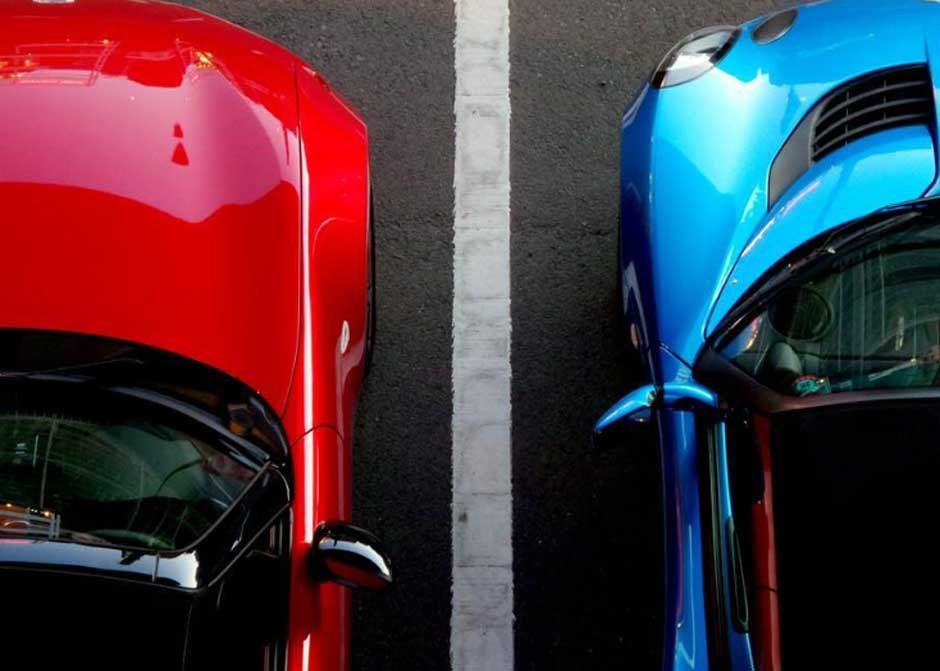Auto painting plays a big role in how a vehicle looks and how it is protected from damage. One of the most important stages in this process is applying the basecoat. The basecoat is the layer that gives the car its color and appearance before adding the final clear coat.
Different types of auto basecoats are used for various finishes, effects, and durability. Each type of basecoat offers unique qualities that influence the final look of a vehicle.
This article discusses the different types of auto basecoat painting, how they work, and what makes each one special.
The Purpose of Basecoat Paint
The main purpose of a basecoat is to create a smooth and consistent color layer that enhances the car’s appearance. It acts as a foundation for the clear coat, which provides gloss and protection. The basecoat also allows customization, letting car owners choose from solid, metallic, or pearl finishes.
Without a basecoat, a car’s color would look dull and uneven. The basecoat’s pigments and resins give the paint its vibrancy and richness.
In custom painting, the basecoat is also used to add creative effects such as fades, stripes, or unique color blends. When properly applied, the basecoat can make even an old or damaged car look brand new.
How Basecoat Paint Works
Basecoat paint works by bonding to the primer layer beneath it. The pigments in the paint create the car’s color, while the resins help it stick to the surface.
When sprayed on, the paint spreads evenly and forms a smooth layer. Once the basecoat dries, a clear coat is applied over it to seal and protect the color.
Each layer plays an important role in the painting system. The primer helps the basecoat adhere to the car’s surface. The basecoat provides color and texture.
The clear coat adds shine and guards against scratches, UV light, and chemicals. Together, these layers make the car both attractive and long-lasting.
Solvent-Based Basecoats
Solvent-based basecoats are one of the oldest and most common types used in auto painting. They use chemical solvents to carry the pigments and resins.
These paints dry quickly and produce a smooth finish. However, they release volatile organic compounds (VOCs), which can be harmful to the environment.
Because of this, many countries have set limits on solvent-based paints. Despite that, they are still popular among repair shops because they perform well and are easy to blend when doing touch-ups. They can also handle extreme weather conditions, making them suitable for vehicles that face heavy use.
Water-Based Basecoats
Water-based basecoats use water as the main carrier instead of solvent. They are more environmentally friendly and emit fewer harmful chemicals.
These paints are popular in modern auto body shops due to their safety and compliance with regulations. They provide excellent color accuracy and coverage.
However, they can take longer to dry and may need special equipment such as air dryers or controlled temperature booths for best results.
Painters must also be careful with humidity, as it can affect drying time. Despite these challenges, water-based paints are now the preferred choice for most new car manufacturers.
Urethane Basecoats
Urethane basecoats are known for their strong durability and glossy finish. They are made from urethane resins, which make the paint more resistant to chipping and fading. These paints are often used for both professional and do-it-yourself projects because of their flexibility and shine.
Urethane paints can be mixed with hardeners to improve their performance. This allows them to cure faster and last longer under sunlight and harsh weather. Because of their toughness, they are ideal for cars that are driven daily and exposed to the elements.
Acrylic Basecoats
Acrylic basecoats use acrylic resins that provide bright colors and a smooth texture. They are lightweight and easy to work with, which makes them great for beginners.
Acrylic basecoats dry quickly and can be polished easily. However, they are not as durable as urethane or enamel paints.
Painters like acrylics for show cars and older vehicle restorations because they produce a soft, glossy finish that looks classic. These paints can also be layered to achieve a deeper shine. They may need more frequent maintenance, but they offer a beautiful appearance for less demanding uses.
Enamel Basecoats
Enamel basecoats offer a hard, glossy finish that is resistant to wear and tear. They are made with enamel resins that cure to form a tough outer shell. These paints are suitable for vehicles that need strong surface protection.
Enamel paints are often used for trucks, utility vehicles, or off-road cars. They can handle rough conditions better than some other paint types.
Although they take longer to dry, the final result is worth it. The finish has a mirror-like depth that remains beautiful for years with proper care.
Metallic Basecoats
Metallic basecoats contain tiny metal flakes that give the paint a shimmering, reflective look. These flakes catch and reflect light, creating a sparkling effect that changes with the angle of view. This type of paint is popular on sports cars and luxury vehicles because of its dynamic appearance.
The finish can range from subtle shimmer to bold sparkle, depending on the amount and size of the metal flakes. Metallic paints require careful spraying to ensure even distribution and avoid patchiness. A clear coat is always added on top to protect the metallic layer and enhance gloss.
This type of finish is often achieved using metallic basecoat Automotive Paint, which provides both beauty and long-lasting performance for cars.
Pearlescent Basecoats
Pearlescent basecoats, sometimes called “pearl” paints, use mica or ceramic particles instead of metal flakes. These particles create a soft, multi-tone effect that changes color when viewed from different angles. Pearlescent finishes look luxurious and deep, making them common in high-end cars.
They are harder to apply than regular paints because the effect depends on how light passes through the layers. Multiple coats are usually needed to build up the shine. When combined with a glossy, clear coat, the result can look stunning and elegant under sunlight.
Candy Basecoats
Candy basecoats are known for their rich and transparent colors. They are applied over a reflective base, such as silver or gold, to create a deep, glowing look. The base layer reflects light through the transparent color coat, giving the finish a “wet” appearance.
Candy paints are beautiful but challenging to apply because each coat must be even. If one layer is heavier than the rest, the color will appear darker in that area.
Painters often use several light coats to control the tone. These paints are common in custom jobs, show cars, and motorcycles that aim to stand out.
Solid Color Basecoats
Solid color basecoats are the most common type of paint used for everyday vehicles. They do not contain metallic or pearlescent particles. Instead, they provide a single, flat color across the surface.
Solid colors are easier to match and repair than specialty paints. They are also more affordable and require less maintenance.
Most factory-produced vehicles use solid colors like white, red, or black. The simplicity of solid basecoats makes them perfect for drivers who want a clean and timeless look.
Matte Basecoats
Matte basecoats produce a non-glossy finish that has become trendy in recent years. Unlike glossy paints, matte finishes do not reflect much light, giving the car a sleek and understated look. They can be made in both solid and metallic versions.
Maintaining matte finishes requires extra care. Traditional waxes and polishes can damage the texture and make it shiny, which ruins the effect.
Specialized matte cleaners and coatings help preserve the soft look. Even though they are harder to maintain, many car owners love the bold and modern feel of matte paint.
Custom Basecoats
Custom basecoats allow painters and car owners to experiment with unique color blends, effects, and finishes. These may include color-shifting paints that change hue based on light or angle, known as chameleon paints. Others mix different layers, such as metallic and candy, for one-of-a-kind results.
Custom basecoats are often used on show vehicles, classic restorations, and high-end designs. They demand skill, patience, and creativity.
Painters spend hours testing combinations to get the perfect tone and visual effect. The result is a finish that captures attention anywhere it goes.
Choosing the Right Basecoat for Your Vehicle
Choosing the right basecoat depends on several factors, including budget, desired look, maintenance level, and purpose. If durability and performance are top priorities, urethane or enamel basecoats are great choices.
For environmentally friendly options, water-based paints are ideal. If the goal is to achieve a show-quality finish, metallic, pearl, or candy paints may be the best fit.
The type of car and how it is used also matter. A daily driver may need a strong and easy-to-maintain paint, while a show car may need something that looks exceptional under lights. Consulting with an experienced auto painter helps ensure the best results and prevents costly mistakes.
Explore the Different Types of Auto Basecoats
Auto basecoats are the foundation of every car’s paint finish. They bring color, texture, and personality to a vehicle while supporting the protective clear coat above. From solid and metallic paints to pearlescent and candy styles, each type offers distinct qualities that suit different preferences and purposes.
Understanding these types helps car owners and painters make the right choice for their vehicles. Whether aiming for a simple, classic finish or a striking custom design, the right basecoat ensures a smooth, vibrant, and long-lasting result.
Looking for more tips and ideas? We’ve got you covered. Check out some of our other posts now.







